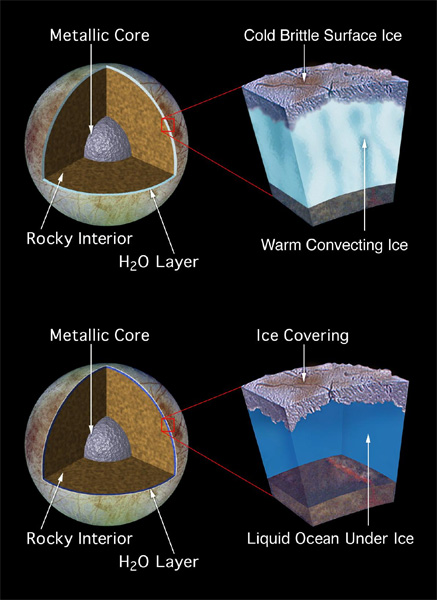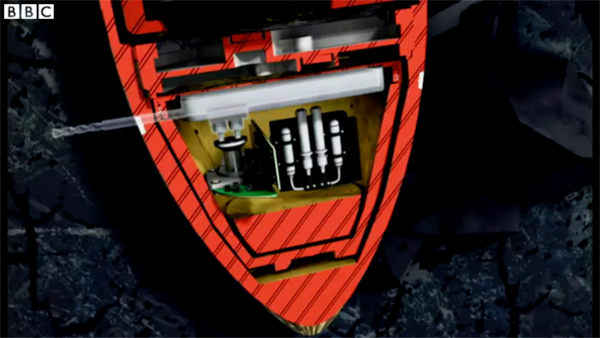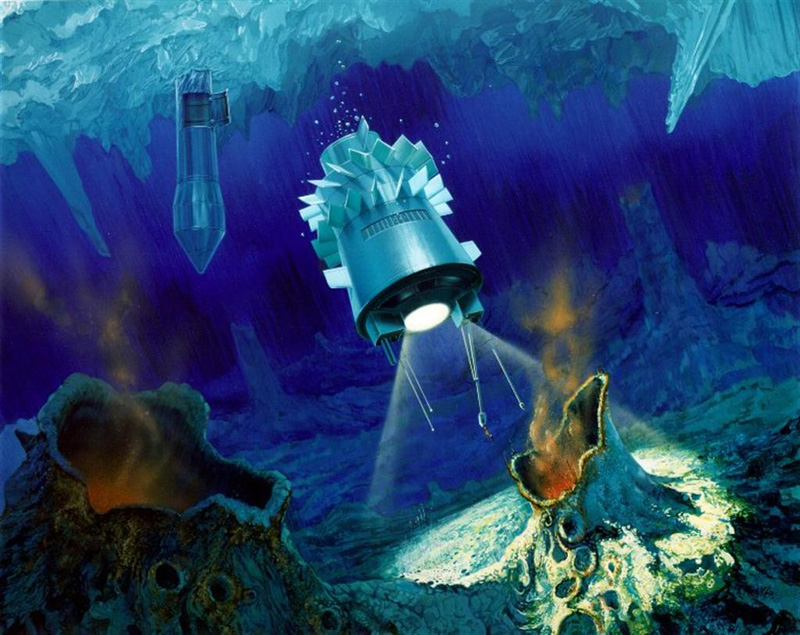
13th July 2013 Steel penetrator could be used to explore Jupiter's icy moon Europa British engineers have developed a high-velocity steel penetrator, capable of surviving impacts of 25,000 G with on-board electronics intact. Based on bunker-busting missile technology, this could one day be used to punch into the surface of Europa.
Europa's surface − one of the smoothest, brightest and youngest in the Solar System − is composed of frozen water. Temperatures average −160°C (−260°F) at the equator and can reach down to −220°C (−370°F) at each of the poles, keeping the icy crust as hard as granite. This solid outer layer is thought to be around 10–30 km (6–19 mi) in thickness, beneath which there is strong evidence for an ocean of water, kept in a liquid state by Jupiter's massive tidal forces. Possibly as deep as 100 km (62 mi), the volume of water here could be more than twice that of Earth's oceans. A total of six spacecraft have visited Europa − Pioneer 10 and 11, Voyager I and II, Galileo and New Horizons. However, these have been unable to fully characterise its surface environment. NASA plans to send the "Clipper" orbiter in 2027, that will study the moon in unprecedented detail. It is hoped that this mission will confirm its crust thickness, as well as the saltiness and depth of its ocean. This is assuming it actually has one, since it is also possible that a layer of warm slushy ice is present there, as shown in the top model:
The liquid ocean model (favoured by most scientists) has led to a tantalising hypothesis that Europa may harbour some form of extra-terrestrial life. This could be sustained by warm hydrothermal vents at the bottom of the ocean, driven by geological activity similar to plate tectonics. Data gathered from NASA's Clipper spacecraft − as well as the "JUICE" mission a few years later in 2030 − will help guide the development of future landers, able to drill through miles of ice and explore the oceans below. Long before then, however, a number of smaller probes could be deployed, using the technology demonstrated here to penetrate through several metres of the outermost crust. These would relay data back through a carrier satellite. "It was really successful because the entry velocity was higher than expected and all the systems we've looked at so far have survived," said Marie-Claire Perkinson, the programme's industrial leader from Astrium UK.
In addition to its high-velocity impact, such a probe would need to survive extremely low temperatures, which can quickly render batteries and electronics inoperable. However, the team has designed a vacuum gap (seen in the rendering above) to isolate components from the environment outside. Their work will now concentrate on improving battery life and communications capabilities, with a flight-ready system planned for 2020. It might be a few decades before we see a fully-functioning, automated, submarine robot − like that pictured below − capable of exploring the deep oceans of Europa and sending back video footage. In the meantime, however, we may still glean some intriguing details of this mysterious moon, thanks to a cheaper and simpler probe being developed right now.
Comments »
|









